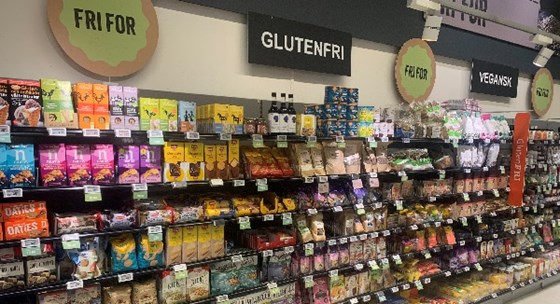
Business Finland / Food from Finland is happy to invite you to a Meet the Buyer-event for gluten free foods in Denmark.
We are looking for Finnish companies producing gluten free food products according to EU food labelling regulations, such as:
- Crackers and biscuits
- Bread and pastry
- Pasta
- Gluten free snack foods such as, candy, energy/protein/granola bars
Company one-pager
Prior to the event, we would kindly ask you to submit/edit your company profile at the Finnish Solutions and Innovations site on Business Finland web page, finnishsolutionsandinnovations.com
The deadline for submitting the one-pager is Monday 13 November.
Coaching session
Before the event we will arrange a coaching session for pitching including market insights from the Danish market for participants. The coaching session for pitching will be held Thursday 16 November and Friday 17 November. You will receive a separate Teams-link for this session and timing will be confirmed after registering.
Market insight
In Denmark, like many other countries, the gluten free trend shows no sign of abating. Aside from ethical concerns, consumers remain hugely influenced by the associated health benefits of the products they buy, with many consumers looking to reduce their consumption of packaged food which is high in salt, sugar and/or saturated fat. On a global level, the market for gluten free products is estimated to total EUR 7.4 billion in 2023. Driving growth in the gluten free market is not only an increased prevalence of celiac disease but consumers increased interest in the nutritional functioning of foods. For example, gluten free pasta made from beans has a nutritional profile with twice as much protein and up to a fourfold increase in fibre compared with the equivalent product made from refined flour.
Despite Denmark’s high GDP, discounters dominate its grocery retail channel. Netto leads the market with a 13.9% share. Rema 1000 is close behind with 13.6%. SuperBrugsen follows with 11.4% of the market. Examining your product category is highly recommended to understand if retailers have an appetite for premium brands.
47% of consumers want their brands to be sustainable and sustainability is the most important brand value for Danish consumers, closely followed by being socially responsible (41%). Subsequently, emphasis is placed on brands ability to make eco-friendly claims or highlight sustainability credentials. Danish consumers tend to prefer and show greater trust in Nordic brands, thanks to their locally sourced ingredients, domestic manufacturing, and perceived Nordic quality. Local brands also resonate more strongly with the importance of sustainability to Danish consumers.
Most food is bought in physical stores. The packaged food market is shared between supermarkets (30%), hypermarkets (25%) and discounters (28%). Around 3% of sales are online. Online grocery shopping is not as prevalent as in many other European markets, but it is growing. Be prepared to discuss online sales if e-commerce is part of the retailer’s strategy. As the market is so fragmented, emphasis should be placed on building distributor relationships, rather than targeting tens of individual contracts.
Participating in trade shows can be a cost-effective way to find the right distributor and facilitate contact with food brokers, importers, and wholesalers. Food Expo is the largest food trade fair in the Nordic countries. This 3-day event takes place in Herning in the Central Denmark region of the Jutland peninsula.
Food magazines can be a great way to generate conversation around your brand and highlight key partnerships in market. They can also help make distributors aware of your brand. Gastro is the biggest food magazine in Denmark. The magazine reviews supermarket products as well as offering restaurant reviews and recipes. Copenhagen Food is a prominent Danish food magazine featuring recipe suggestions and restaurant reviews.